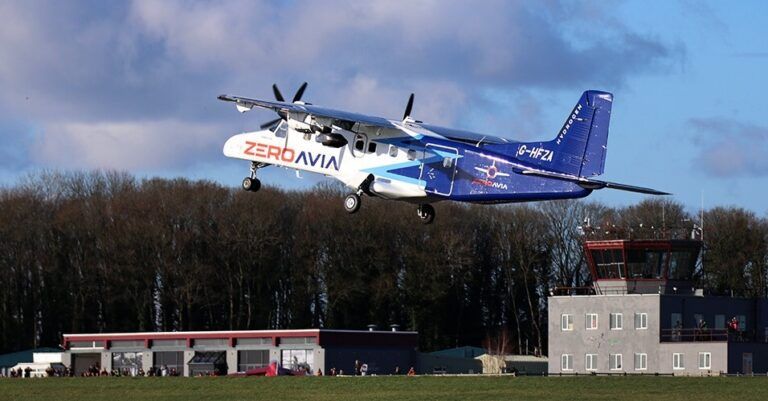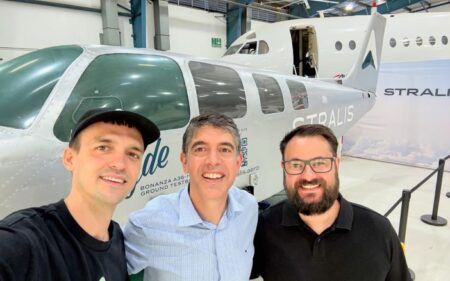Hydrogen aircraft developer ZeroAvia has successfully completed the first test flight of its hydrogen fuel cell-based powertrain on its Dornier 228 aircraft.
The modified Dornier, which had a take-off weight of 5,650kg (12,450 lbs) becomes the largest aircraft yet to fly powered by a hydrogen fuel cell-based powertrain.
The test flight from Cotswold Airport in Gloucestershire, UK lasted 10 minutes, reaching an altitude of 2,500ft and a top speed of 140mph (225km/h).
The first test flight is a key milestone for ZeroAvia, which was founded in 2017 and is based in the UK and USA. The UK Government has part-funded ZeroAvia’s technology development through the HyFlyer project, now in its second phase.
ZeroAvia’s hydrogen-electric engine was fitted on the left wing of the Dornier with a battery pack to provide peak power support during take-off and redundancy for safety. On the right hand wing a Honeywell TPE-331 engine was used.
During the flight half of the left wing engine’s power requirement was supplied by the fuel cell and half by the battery. The two fuel cell stacks used during the flight were supplied by Swedish company Powercell.
The first flight launches a flight test campaign of up to 20 planned flights this year, including flights solely fueld by hydrogen. Gabriele Teofili, head of aircraft integration and testing at ZeroAvia said, “The most important thing during this campaign will be learning how the fuel cell behaves in flight and to bring that to the next stage of development.
“We will stretch the aircraft as much as possible to its maximum speed and weight, altitude and duration to the extent the permit to fly we have allows us to.”
During ground testing last year engineers ran ZeroAvia’s hydrogen engine for a maximum of 25 minutes. Flight testing will target reaching that duration for the test flights, added Teofili. “We
Gaseous hydrogen was used for the flight and stored within the aircraft’s cabin. The final iteration of ZeroAvia’s propulsion system will store hydrogen in an external tank and will only use hydrogen.
Val Miftakhov, founder and CEO of ZeroAvia said, “The entire powerplant will be hydrogen-electric and all the power will come from the fuel cell.
“With the successful test flight of the full size engine and the upcoming flight test campaign we have shown the technology works at scale. We know the market exists for it. We have partners, investors and operators. Now we have to push to the final design iteration and certification.”
ZeroAvia is developing two hydrogen propulsion systems. The first will be the ZA600, a 600kW powertrain for 10-20 seat aircraft which it plans to start supplying in 2025.
The company is also working on the ZA2000, a 2-5MW modular powertrain which targets support for 40-80 seat turboprops at a later date.
The hydrogen-electric engines are intended to be retrofitted to existing aircraft or integrated with new aircraft. According to ZeroAvia it has 1500 on order – around 700 of which are ZA600s.
The ZA600 will launch on a regional aircraft of a similar size to the Dornier 228. ZeroAvia has several agreements in place with airlines and aircraft manufacturers, including Textron to fit the hydrogen-electric powertrain to its popular Cessna Grand Caravan.
The £12.3 million (US$14.7 million) Hyflyer II project started in 2020 and aims to develop a 600kW hydrogen-electric powertrain for a 9-19 seat aircraft by the end of this year.





